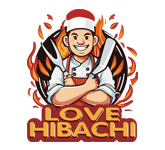From Teppan Grills to Entertainment Feasts: Unearthing the Roots of American Hibachi Culture
When Americans hear "hibachi," they typically envision a dramatic culinary performance: sizzling ingredients expertly manipulated on a hot steel griddle, flames leaping, chefs cracking jokes and flipping shrimp into waiting mouths. This interactive, theatrical dining experience, often hosted at a "Japanese steakhouse," has become a beloved part of American culinary culture, especially for celebrations. But the American Hibachi History is more nuanced than many realize, with roots in post-war Japan and a significant transformation upon its arrival in the United States.
Let's explore how this unique dining phenomenon, more accurately termed "teppanyaki," captured the American imagination and evolved into the hibachi experience we know today.

Clarifying Terms: Hibachi vs. Teppanyaki
First, a crucial distinction: in Japan, a "hibachi" (火鉢, "fire bowl") is traditionally a small, open-topped pot or box, often ceramic, containing burning charcoal used for heating a room or occasionally for light grilling of small items. It’s a far cry from the large, flat steel griddles (teppan) used in the restaurants we call hibachi.
What Americans widely refer to as "hibachi" dining is, in Japan, called "teppanyaki" (鉄板焼き, "grilling on an iron plate"). Understanding the Teppanyaki Origins USA connection means recognizing that we adopted and adapted a specific style of Japanese cooking and, along the way, largely adopted the "hibachi" moniker.
The Birthplace: Post-War Japan and Misono
The teppanyaki style of cooking in restaurants is said to have originated in Japan around 1945 with the restaurant chain Misono in Kobe. Interestingly, Misono introduced the concept of cooking Western-influenced food (like steak, which was not a common part of the Japanese diet then) on a large teppan in front of guests. Initially, this novel style was reportedly more popular with foreign visitors and American GIs than with local Japanese diners, who perhaps found the theatricality or the menu less aligned with traditional Japanese dining norms. This early appeal to a Western palate was a crucial foreshadowing of its later success in America.
Crossing the Pacific: The Benihana Phenomenon and Rocky Aoki
The real catalyst for the explosion of Japanese Steakhouse USA culture was Hiroaki "Rocky" Aoki. In 1964, Aoki opened the first Benihana restaurant in New York City. The Benihana Story is central to American hibachi history. Aoki was a visionary showman. He understood that Americans weren't just looking for food; they were looking for an experience.
Aoki's genius lay in transforming the teppanyaki concept into "eatertainment":
The Chef as Performer: Benihana chefs were trained not only to cook but to entertain. They juggled utensils, created the iconic onion volcano, and engaged diners with witty banter and impressive knife skills. The Birth of Hibachi Grill Show as a dining staple can largely be attributed to this model.
Exoticism and Accessibility: He presented Japanese cuisine in a way that was exciting and accessible to Americans, even those unfamiliar with Japanese food. The focus on familiar proteins like steak, chicken, and shrimp helped.
Communal Dining: The shared tables encouraged interaction and a lively atmosphere, perfect for groups and celebrations.
Benihana's success was monumental, spawning numerous imitators and establishing the teppanyaki/hibachi restaurant as a fixture in American dining. Other chains and independent restaurants followed suit, solidifying this style of eatery across the nation.
The Cultural Impact: Why America Fell in Love
Several factors contributed to the Hibachi Cultural Impact in the United States:
Novelty and Entertainment: It was unlike anything most Americans had experienced. The live cooking was a spectacle.
Freshness and Customization: Diners saw their food prepared fresh and could often interact with the chef regarding preferences.
Social Experience: It became a go-to for birthdays, anniversaries, and group dinners because of its inherently festive nature.
A Taste of the "Exotic": For many, it was an approachable introduction to Japanese Food in America, even if heavily Americanized. The experience felt worldly and exciting.
The "Shrimp Toss": Iconic tricks like catching food in the mouth became synonymous with the fun, sometimes a rite of passage for young diners.
Evolution and Enduring Appeal
Over the decades, American hibachi culture has largely maintained its core appeal. While some critics point to the predictability of the "show" or its divergence from truly authentic Japanese cuisine, its popularity endures. The blend of tasty, crowd-pleasing food and live entertainment continues to draw diners.
Today, the hibachi experience is so ingrained that it's even moving beyond traditional restaurant settings. The rise of private hibachi chefs and catering services is a testament to its lasting appeal. Companies like Love Hibachi allow people to bring this unique dining experience directly into their homes or for private events, offering a personalized version of the show and meal. It's a modern evolution of that original spark of "eatertainment" that Rocky Aoki so successfully ignited. Book via this link to get $20 off your private hibachi celebration!
The story of American hibachi culture is a fascinating example of culinary and cultural fusion – how a cooking style from one nation was adapted, amplified, and embraced by another, creating a unique and enduring dining tradition. It's a testament to the power of a good meal combined with a great show.








